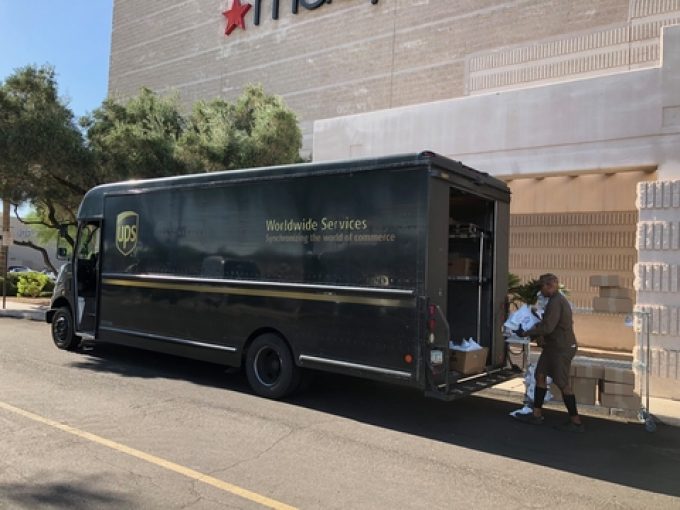East Midlands poised to become 'UK's most important' express air freight hub
East Midlands Airport (EMA) is poised to become “the UK’s most important express air freight ...

After a hiatus in talks, since 5 July, that had heightened worries about a crippling strike next month, UPS and the Teamsters union only required a few hours yesterday to bridge their remaining differences and reach a tentative agreement for a five-year labour contract.
“Together we reached a win-win-win agreement on the issues that are important to Teamsters leadership, our employees and to UPS and our customers,” said UPS CEO Carol Tomé. “This agreement continues to reward UPS’s full- and part-time employees with industry-leading pay and benefits while retaining the flexibility we need to stay competitive, serve our customers and keep our business strong.”
The union leadership was jubilant. Teamsters president Sean O’Brien said: “UPS has put $30bn in new money on the table as a direct result of these negotiations.”
According to the union, under the agreement, 7,500 full-time union jobs will be created, while current full- and part-time workers stand to get $2.75 per hour more this year and $7.50 per hour more over the length of the contact. New part-time employees will start at $21 per hour.
Remuneration was the last stumbling block. Earlier in the negotiations management had agreed to eliminate a lower-paid class of drivers who also have to unload vehicles, and agreed an additional paid holiday and the installation of air conditioning in vehicles.
The deal averts the spectre of a strike paralysing the UPS network from next week, but does not banish the threat altogether. The agreement has to be ratified by more than 330,000 Teamster members employed at UPS in a vote scheduled from 3 to 22 August.
There is broad confidence, though, that they will not derail the deal, which comes as a huge relief for shippers that have not diverted traffic from UPS to other carriers in preparation for a possible strike.
According to one parcel logistics consultant, most shippers have diversified, to avoid having all their eggs in one basket, but many stayed with UPS – either because they felt confident a strike would be avoided, or because the move would have incurred penalties or resulted in losing volume discounts.
And a strike would bring severe repercussions: every day UPS carries as much as 6% of US GDP, from business parcels to consumers’ online purchases. John Haber, chief strategy officer of Transportation Insight, warned that the capacity of all the other carriers would not be enough to absorb the volume moved by UPS – an assessment shared by other parcel consultants and analysts.
Rival carriers, notably the US Postal Service and FedEx, have tried to woo UPS customers into shifting their traffic. FedEx itself faces another round of contract negotiations, after its unionised pilots rejected the tentative agreement hammered out between management and the Air Line Pilots Association, which would have given pilots pay increases of up to 30% over five years.
And, UPS pilots had said they would walk off the job in solidarity with their fellow employees in the event of a strike.
Meanwhile, shippers will now wonder what the new labour contract will do to their costs. Without doubt, UPS will try to recoup the additional spend on its employees through pricing. Last year, a slower peak season did not prevent FedEx and UPS from announcing general rate increases of 6.9% for this year, up from a 5% hike in previous years.
But, as Mr Haber noted, actual price increases in recent years had been in excess of 10%, once surcharges were factored in.
Comment on this article